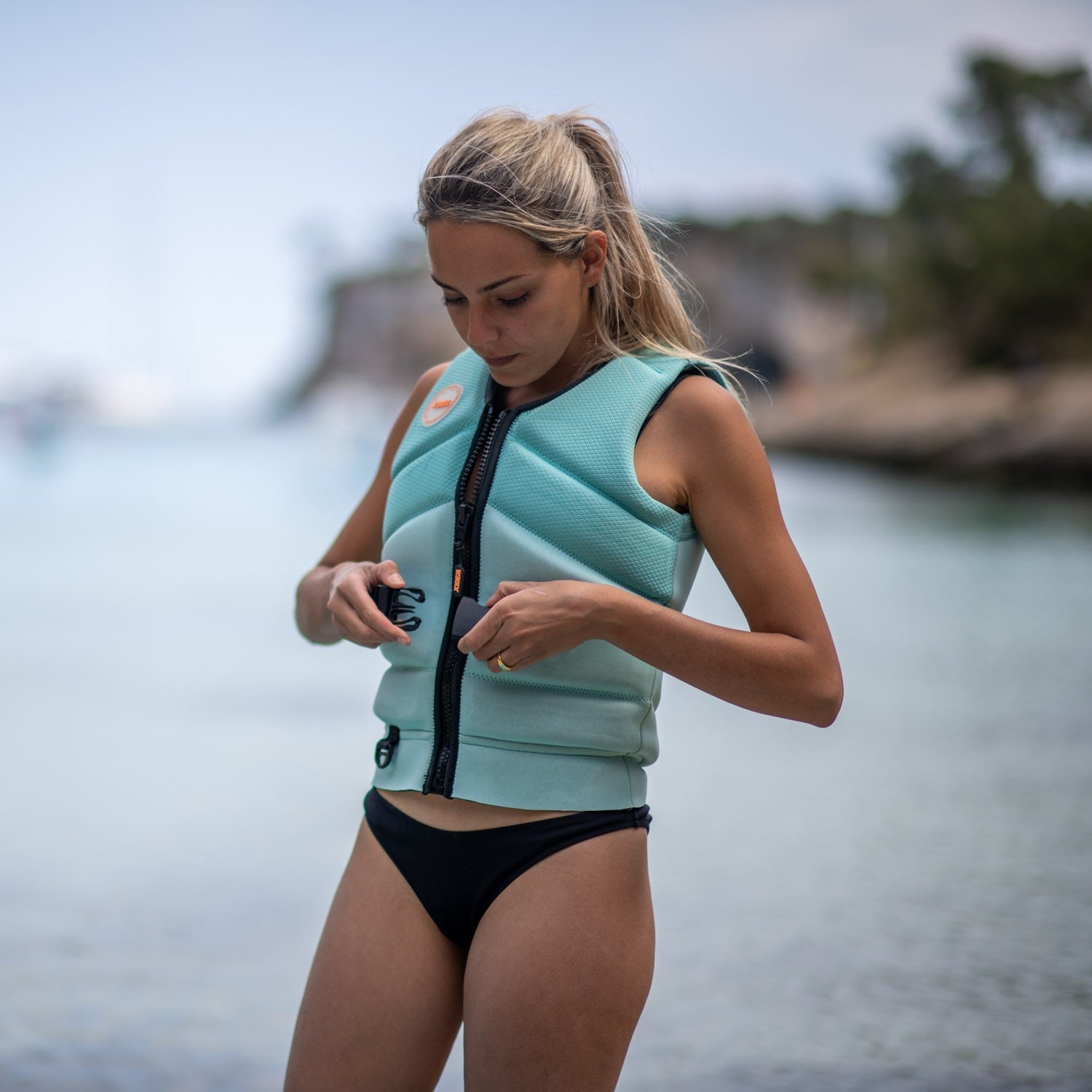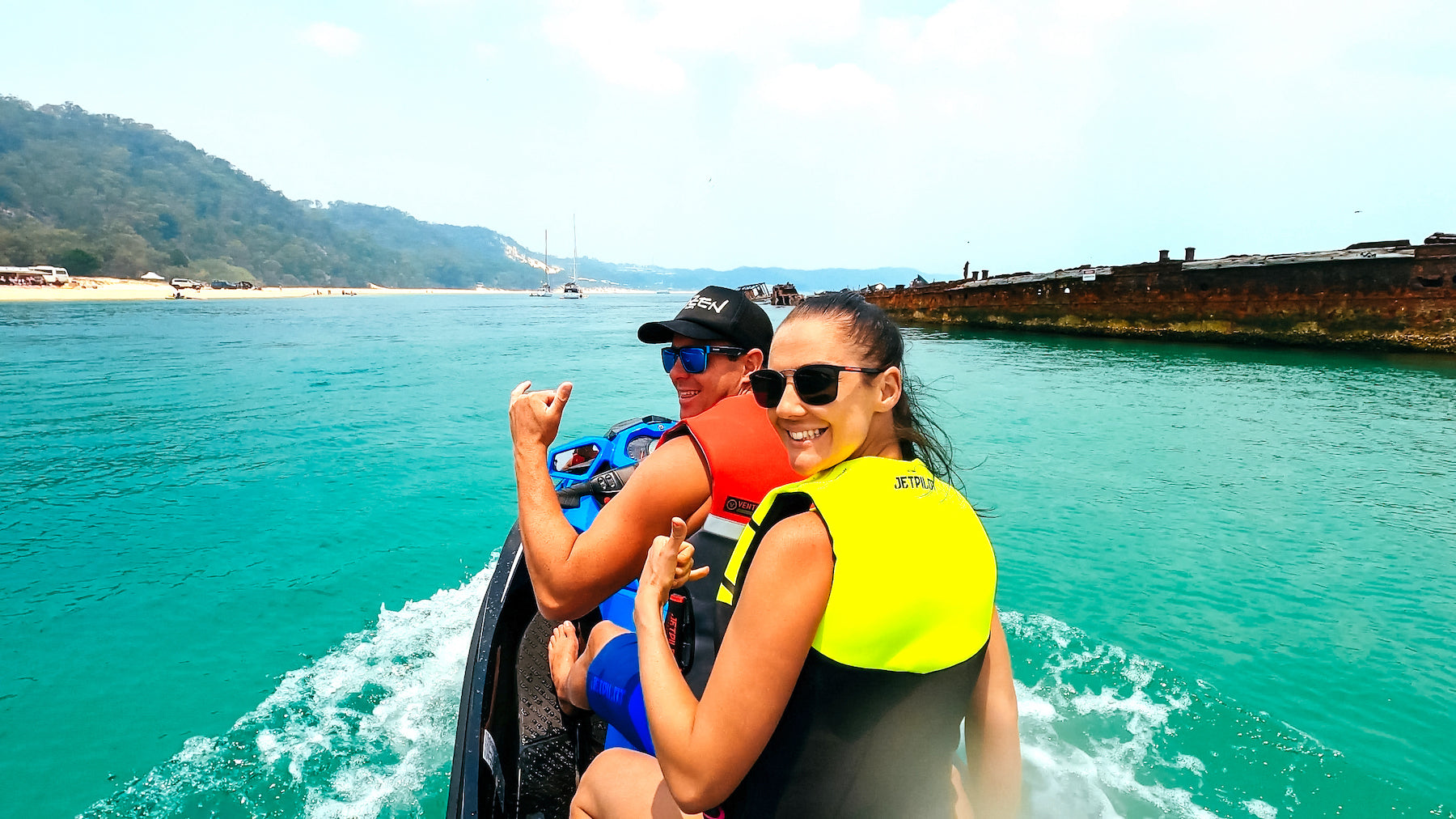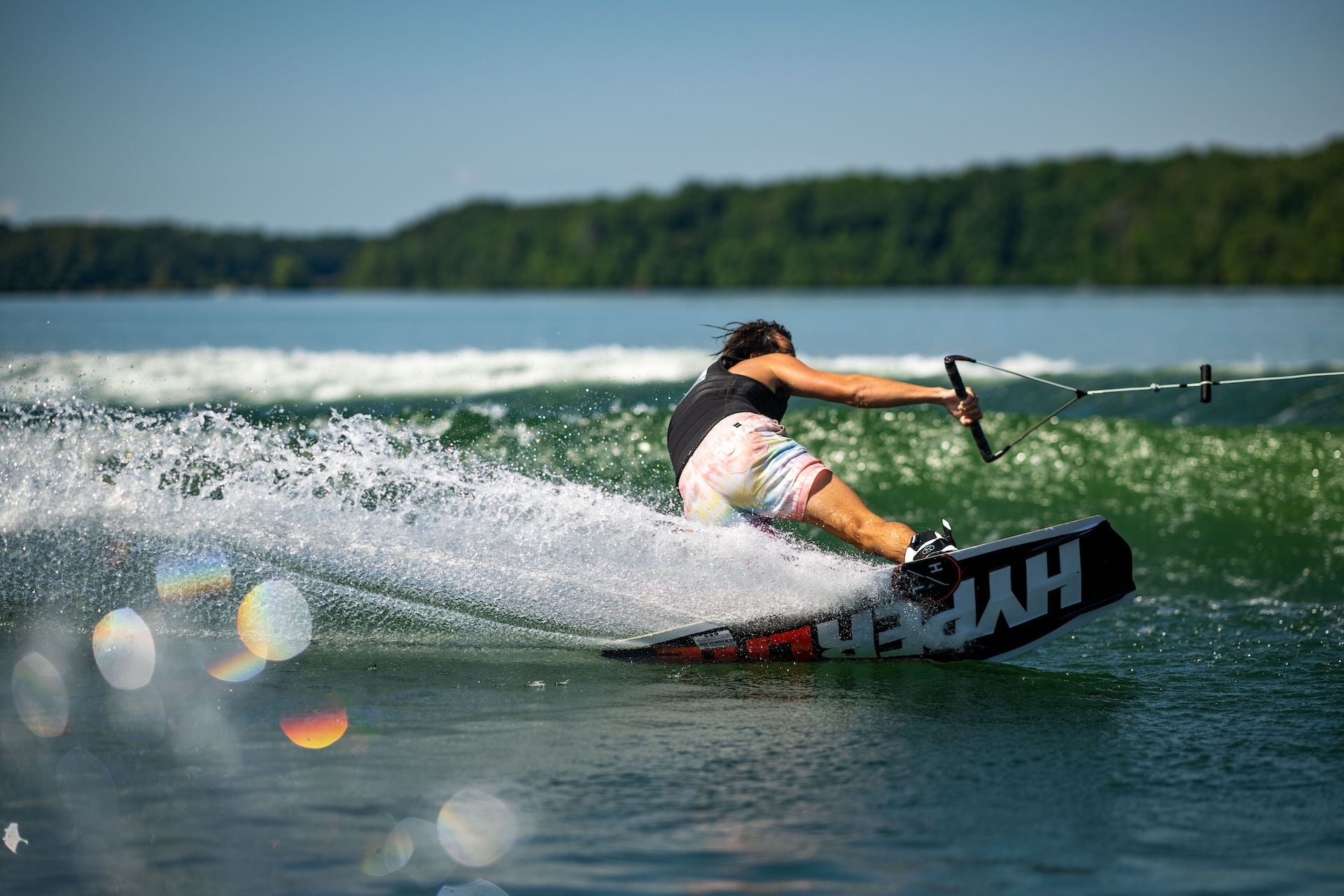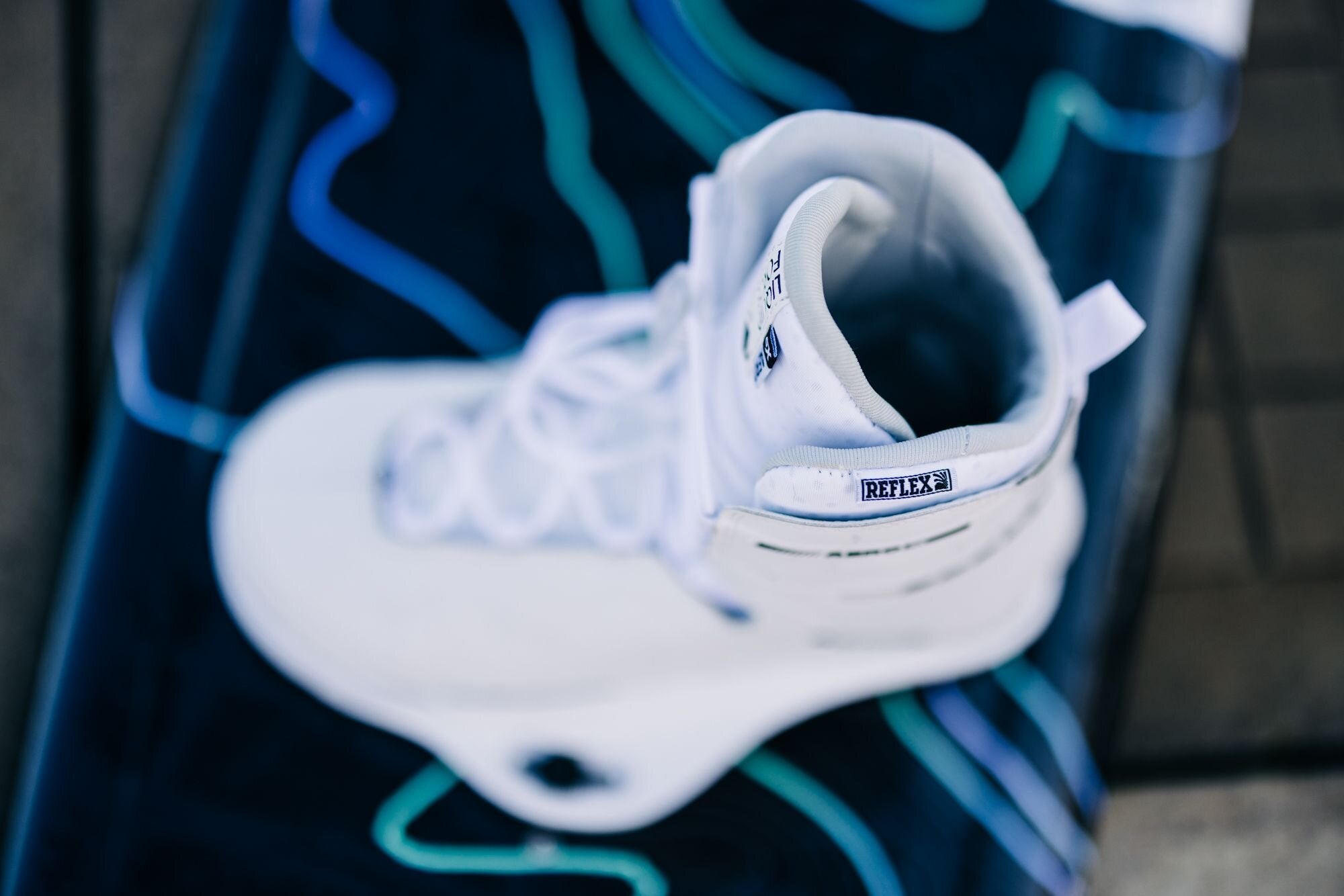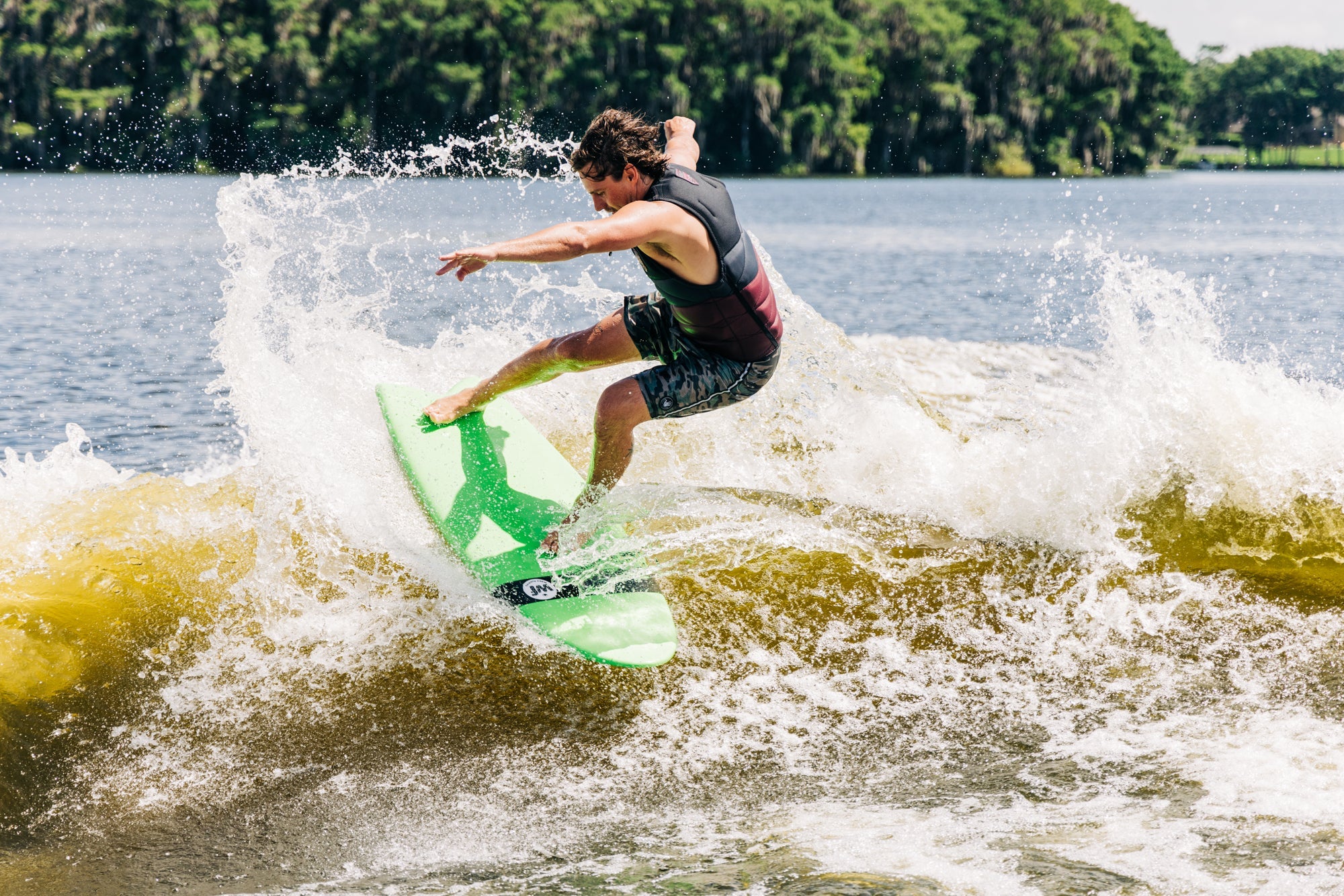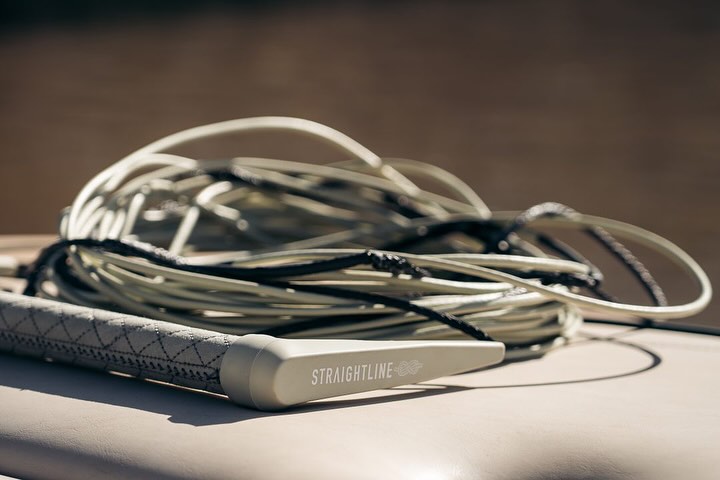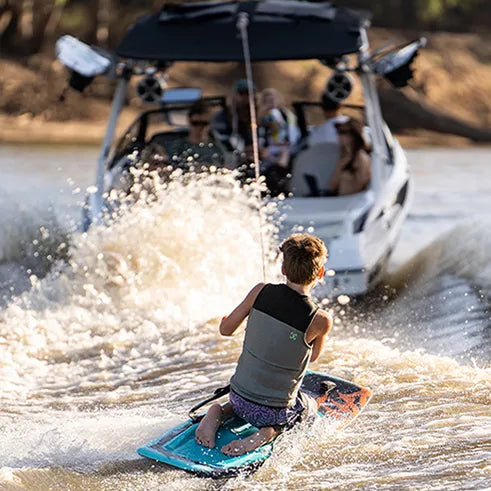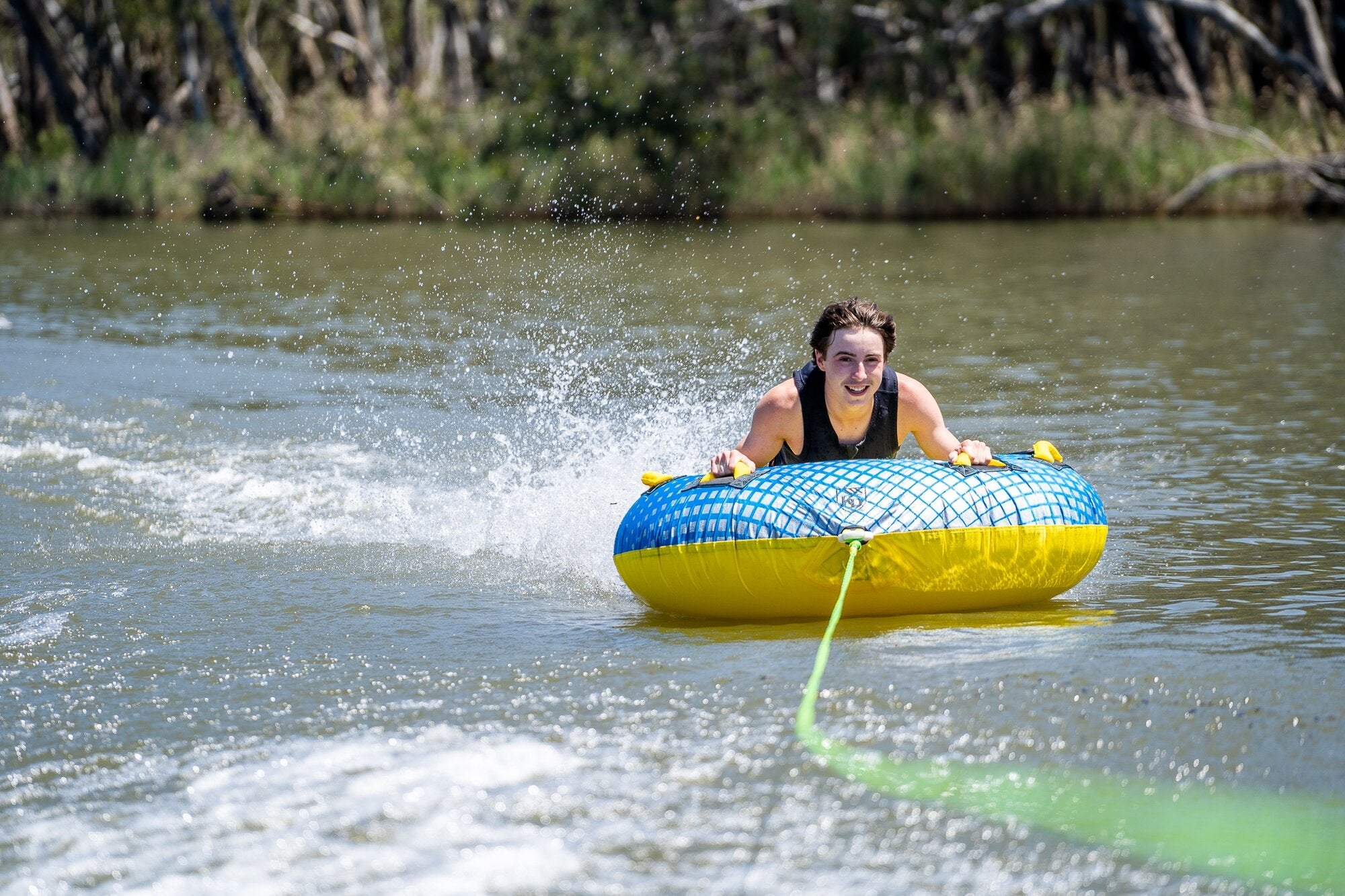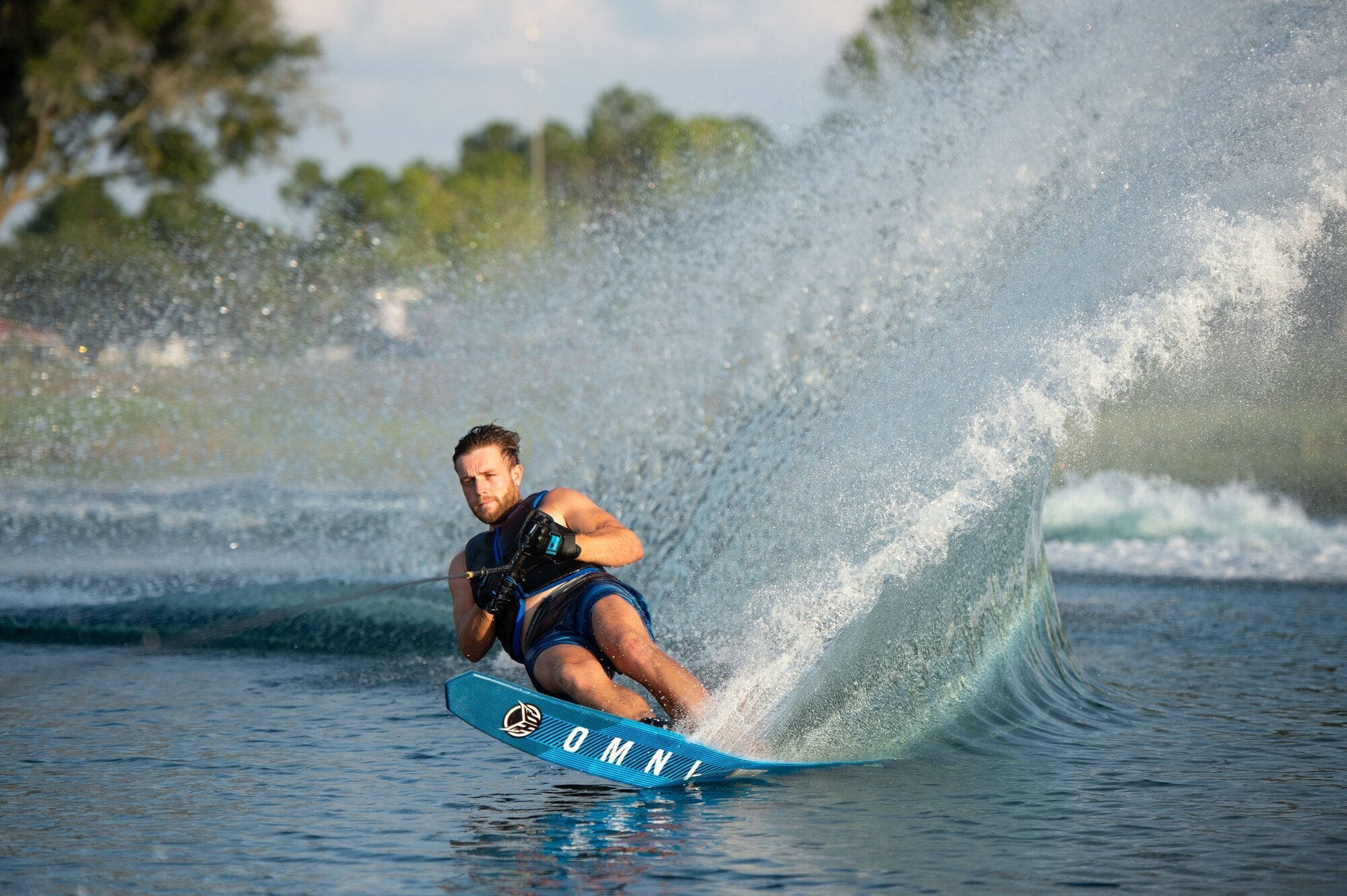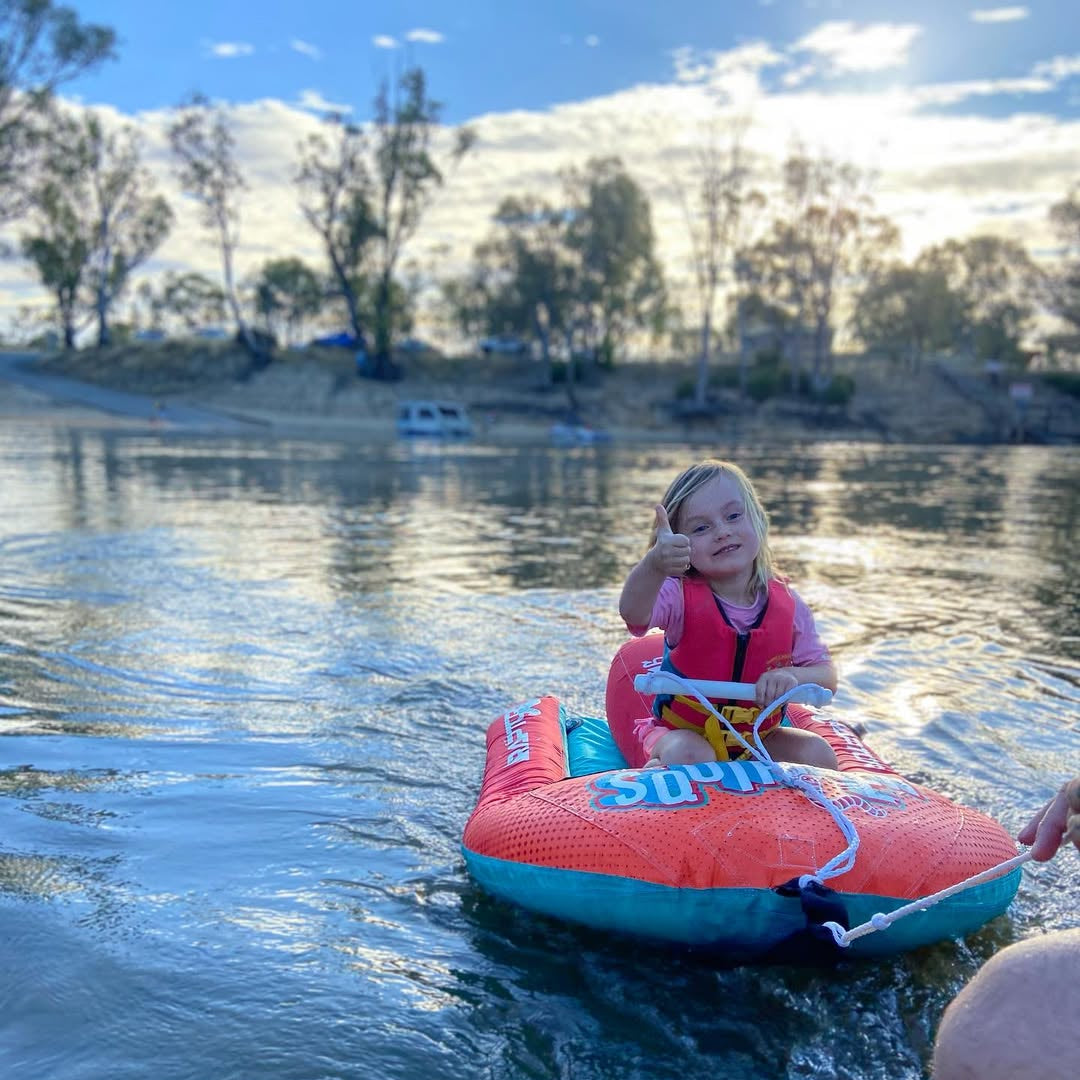Wakeboarding is an exhilarating way to experience the thrill of being on the water; whether that's simply carving around or catching some serious air. But before you run out and buy the first board you see, there are a few key things to consider to ensure you get the perfect ride. This guide will equip you with all the knowledge you need to choose the best wakeboard, whether you're a complete beginner or a seasoned rider looking to upgrade.
1. Understanding wakeboard construction
Not all boards are built the same. Wakeboard brands use a range of different materials and construction methods to create their product, but most boards sit in one of two categories.
Boat wakeboard construction
Boat boards generally have a compression moulded construction which consists of core material which is shaped and then sandwiched between fiberglass layers. This creates a strong and rigid board, ideal for control and manoeuvrability as well as a more instant response as you hit the wake.
Cable wakeboard construction
Cable boards are more commonly built with wood composites, a sintered base and PU sidewalls. The most noticeable feature of these boards compared to boat boards is Flex - you'll notice you can bend your cable board much more than any boat board. This make for a more fun ride on obstacles but also provides more durability from the impact experienced when hitting said obstacles.
What construction is best?
This depends entirely on where you intend on riding. If you're exclusively at a cable park or exclusively behind a boat, the decision is fairly obvious. If you intend on doing a little of both it can get a little harder.
There are crossover boards available that will do both - these often take on a cable construction (i.e. flex) but will have some fins to provide more control behind the boat.
If most of your riding will be done on cable with only a few boat sessions a year these crossover boards are perfect.
On the other hand, if you're riding mostly boat, with the occasional cable session you might find these boards harder to ride behind the boat.
Our honest recommendation here is to buy a boat board which will suit you most of the time and consider hiring a cable board from the park, or even finding a second hand cable board on something like Facebook Marketplace.
You'll spend a little extra and have to store a second board, but you'll enjoy riding both far more.
2. Rocker: The secret to your wakeboard's pop
If you lay a wakeboard on the ground, you'll notice the way the board curves up so the tip and tail sit higher than the middle. This curvature is called rocker, and it significantly impacts how the board rides. There are two distinct rocker profiles:
Continuous Rocker
As you'd expect, a board with continuous rocker will have a consistent curve from tip to tail. These boards offer a great deal of consistency and predictability in the way they ride and how the pop off the wake.
Three-stage rocker
Three stage rocker boards will adopt more of a skateboard shape, although nowhere near as extreme. They will have almost a flat spot between the bindings with the rocker then curving up more aggressively to the tip and tail.
A three-stage rocker board will give far more pop off the wake, but it can be harder to control and less consistent than a three-stage counterpart.
Hybrid Rocker
We're seeing more and more boards hit the market with hybrid rocker lines. These boards adopt a blend of both rocker lines (consider them a very subtle three stage) in an effort to offer more explosive pop than continuous rocker boards with more consistency than three-stage boards.
What's the best rocker profile?
For beginners, we recommend starting with a continuous rocker. While you're learning to jump you need a board that will make it easy, not buck you around like a raging bull.
As you develop your skills, you'll start to develop a sense of what you want. It's not as simple as more advanced riders wanting more aggressive pop.
In short, if you want to go as big as possible and you'll deal with whatever comes next, look for three stage. If you're not sure if you can (or want to) deal with the inconsistency of three-stage go for a continuous or hybrid rocker board.
3. Choosing the right shape for your riding style
If you were to take a close look at a stack of different wakeboards, you'll notice each board will have a different tip and tail profile, different widths, different fin setups and a different array of moulded channels or rails along the bottom.
We're not going to go through all these variables in too much detail - that's a quick way down a very long rabbit hole. But it is helpful to understand what each brand is trying to do when they shape their board. A better understanding of this will help you skip pass the generic descriptions brands give their boards; believe us when we say not every board is super fast, has soft landings and mega pop!
To put it simply, these "shape" features will influence how the board rides along the surface of the water. How much grip it has on edge, how quickly it can transition from edge to edge, how forgiving the board is if you lose your balance are all influenced by these features.
We like to keep this as simple as possible and look at it as a spectrum from "fast and loose" to "on rails". In this respect, a board that's fast and loose will ride higher on the water - almost skimming the surface. These boards well feel lighter, more snappy and are easier to release into a surface spin. Visually, these boards will have relatively flat base surfaces and more rounded edges.
Boards that are on rails sit deeper in the water, will provide more confidence on edge and can transition to edge a little quicker. Generally, you'll notice these boards will have deeper rails and sharper, more refined edges.
So what's better?
Well, that's up to you. Neither is bad and neither is necessarily good. As you read through those descriptions, you would've intuitively thought one sounds better. If that's the case, trust your gut!
If you didn't, there are a plethora of boards that have a more balanced approach . In general the beginner to intermediate range of boards will sit in the middle of the spectrum and more advanced boards will start to branch a little wider; as you get to this level you'll begin developing a better sense of what you want.
What about fins?
Fin setup is something we get asked about a lot. We suggest not getting to caught up in fin size and placement. While they are important, the fins on a wakeboard really just tell part of the story; they contribute to the overall feel of the board and are generally not something you would change or play around with too much.
One thing that should be noted is the removable center fin we see on a lot of entry level wakeboards. These boards will often have moulded fins on each side of the board, in addition to the removable fin. The center fin is designed for beginners; it will help the board track straighter and keep edge-to-edge transitions under control.
Once you're up and riding and feel like you have full control over your board, take that sucker out. You'll feel the board lighten up real quick, giving a more snappy feel from edge-to-edge and more freedom if you want to start working on surface spins.
4. How to choose the best wakeboard size
When it comes to a choosing a wakeboard, size is crucial. A board that's too small will feel like it's sinking, making you work harder and meaning the boat needs to go faster. A board that's too big can simply be too hard to control.
How are wakeboards measured?
Wakeboards are measured in length with the size (e.g. 135) representing the length in centimeters from tip to tail. Each board designed by a manufacturer will come in a range of different sizes, each size often separated by 4-5cm.
When comparing two different model wakeboards, don't get too caught up in a difference of 1-2cm. It's usually those 4-5cm gaps where a more significant difference can be felt on the water.
What size wakeboard is best?
As a starting point, we recommend using the wakeboard size chart below.
Stick to the chart and your shouldn't have any issues at all, but there are some other considerations:
Don't be afraid to size up
We've kept this chart fairly traditional, but our experience is that going up a size can be beneficial. A bigger board will offer more surface area which helps riders of all levels.
For beginner-intermediate riders, you'll find more surface area provides better stability while more advanced riders find a larger board can provide more pop and enables you to slow the boat down, boosting the wake a little.
It might not be for everyone, but it's something we recommend to just about every customer that we speak to.
Choosing the right size wakeboard for kids
Kids are tricky. Much like buying life jackets, it's uncanny how often you buy something that they outgrow in about 4.3 days.
To that end, we urge you to follow our previous point and size up. You could make an argument to jump two sizes purely from the point of longevity and getting more seasons from your gear.
That approach can trade off some performance in the short term so if you're more focused on progression then stick to a more traditional size, but if you'd rather not buy a new board every season have a look at going up a size or two.
Why are cable boards longer than boat boards?
If you're on the hunt for a cable board, you'll notice the chart above recommends larger boards for cable compared to boat. The primary reason here is speed. Behind a boat, most adults will ride around 22mph, whereas most cables are 3-4mph slower than that.
As you slow down, you need more surface area under your feet to support your weight on top of the water.
Larger boards on cable also provide a little more stability on obstacles and can help keep momentum with heavy landings off kickers and from air tricks.
Still not sure where to start?
That's cool. We're here to help. We encourage you to reach out to our team of wakeboard experts. They have spent years on the water and are ready to pour all that experience and knowledge into finding you the perfect ride.
Click here to contact our team.

